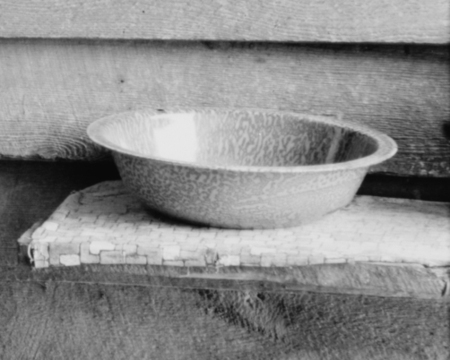
After reading Michael Kimmelman’s great New York Times article on “Carbon and Silver,” the new Walker Evans exhibit at the UBS Art Gallery here in New York, I had to visit, and we went on Friday afternoon. As the curators, John Hill and Sven Martson, explain, Evans shot most of his famous Depression-era photographs on large-format cameras. Most of his negatives were 8 by 10 inches, so large that he usually made contact prints (i.e., simply laid the negative on a piece of photographic paper of equal size, and exposed it). Each of his photographs is therefore incredibly dense with visual information, a veritable dwarf star of information if compared to an 8 by 10″ enlargement of an image recorded on today’s standard, a 35mm negative.
In his article, Kimmelman seems concerned to calm purists who might think Hill and Martson are tampering with masterpieces. Although I don’t think of myself as a purist, when we started the exhibit, I did feel skeptical at first, perhaps because I was put off by a horizontal striation in some images, which seemed to be an artifact either of a grain in the paper they were using or a quirk of their laser printer. But then I began to notice details I’d never seen in the photos before—an anorexic kitten half hidden behind the leg of a table, a tiny oval of spilt coffee on a wood floor, two women talking on the stoop of a building in the far distance. Hill and Martson blow up some of Evans’s photos to gargantuan sizes, and remarkably enough, they hold up. If anything, under the new scrutiny possible, they’re even more impressive. In one image, it was now possible to pinpoint where in a tree’s branches the wind happened to be blowing.
I couldn’t let go. Many of the negatives are held by the Library of Congress, and the images themselves are public property, since Evans shot them for the federal government. The exhibition notes revealed that the Library of Congress also did much of the digitization for this show. When I got home, I checked in the LOC’s Prints and Photographs catalog (online), searching for ‘Walker Evans’ under the ‘Creators and Other Associated Names’ rubric, and by paging through the several hundred images there, found several scans up to 28 megabytes in size. They’re rather large files, so the images are awfully fine-grained. I converted a few into JPEGs, uploaded them into Kodak’s online photo printing service, and ordered a print of one at 20 by 30 inches, the largest size that Kodak’s online service offers. It hasn’t arrived yet, so I can’t say how it compares to those in the UBS Art Gallery. I don’t expect it to rival them, seeing as how Hill and Martson are expert printmakers who knew Evans and worked with him personally. But I thought I might get something pretty interesting for under $30.
Then, still a little obsessive, I took five images I liked, and uploaded not only them, but also a blow-up of a section of each image at a higher magnification, and blow-ups of two other spots in each image at a still higher one. I put them together in a sequence, which you should be able to view as a slideshow by clicking here. The intention is that you see each image, and then feel as if, in the next three enlargements, you’re stepping into it. (My goal was to make a little flip book for myself, using the ‘Create a Mini-Book’ option, which I did. Again, I can’t tell yet how it came out, but if you want one, I think anyone can order it from the slideshow page, if you sign in and fork over to Kodak $10 plus $3 shipping.)
The five images I chose: “Street in Bethlehem, Penna.,” Nov. 1935 (LC-USF342- 001166-A). “Washstand in the dog run and kitchen of Floyd Burroughs’ cabin, Hale County, Alabama,” 1935 or 1936 (LC-USF342- 008133). “Ruins of supposed Spanish mission, tabby construction, St. Marys, Georgia,” March 1936 (LC-USZ62-116591). “General store interior, Moundville, Alabama,” summer 1936 (LC-USF342- 008164-A). “Negro barber shop, Atlanta, Georgia,” March 1936 (LC-USF342- 008100-A).
The image at the head of this post is an enlargement of a detail in “Washstand in the dog run and kitchen of Floyd Burroughs’ cabin, Hale County, Alabama.”
